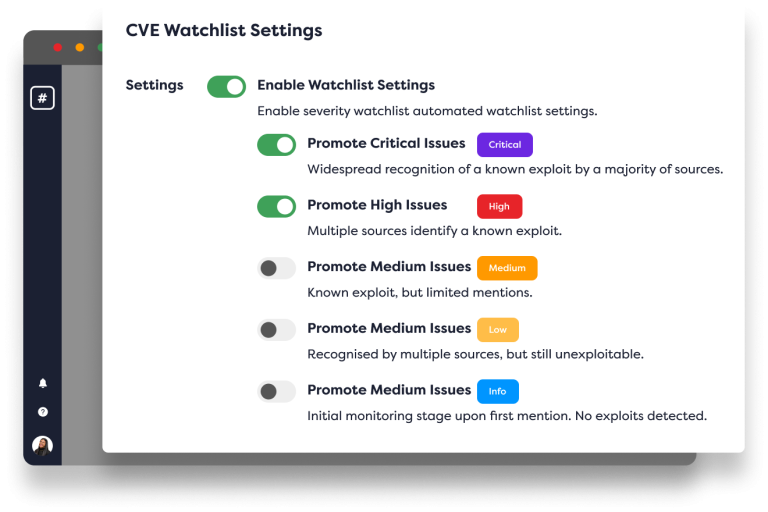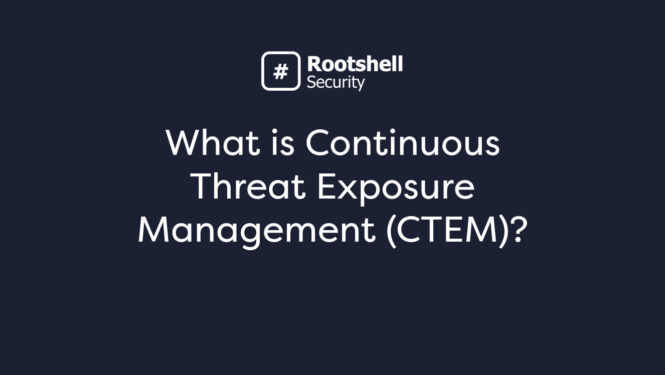Introduction
There are 29.32 billion connected devices in the world today and the number is supposed to go up to 45.72 billion in 2028. With so many connected devices, there’s the growing threat of cybersecurity vulnerabilities.
The Common Vulnerabilities and Exposures (CVE) program is designed to combat them. It’s a standardized system that helps you identify, track, and address these vulnerabilities.
What Is the CVE Program?
The CVE program is an initiative that gathers and handles information security vulnerabilities in a centralized database for cybersecurity professionals worldwide. It’s a crucial security tool sponsored by the U.S. Department of Homeland Security and maintained by the MITRE Corporation.
CVE Program Features
The CVE program consists of a wide array of features designed to streamline the process of identifying and addressing vulnerabilities:
Advisories
Advisories are detailed publications that provide essential information about specific vulnerabilities, their associated risks, and potential fixes. These comprehensive guides for cybersecurity professionals offer insights into the nature of the security flaws, their possible impact on systems and networks, and recommended mitigation strategies.
By providing actionable intelligence, advisories enable your business to make informed decisions about how to prioritize your threat vectors.
Feeds
CVE offers real-time RSS feeds with the latest vulnerability intelligence to update you on cybersecurity threats. By subscribing to CVE feeds, you can receive timely notifications about newly discovered threat vectors. This information helps you protect your systems, memory and network proactively. As a result, you stay ahead of emerging threats and mitigate risks more effectively by managing access to critical resources
APIs
CVE offers APIs to integrate CVE data into your custom applications or vulnerability management solutions so you can leverage this information in your existing workflows and processes.
You can also integrate CVE APIs into your existing security infrastructure. That allows you to automate exposure management tasks, streamline analysis processes, and enhance your overall cybersecurity posture.
CVE Identifiers
CVE identifiers are unique codes assigned to each vulnerability entry. These universal references enable cybersecurity professionals to quickly locate and reference specific weaknesses across different platforms and environments.
With this uniform identification process, CVE identifiers make communication and collaboration among security stakeholders easier. It ensures that everyone is on the same page when discussing security flaws. That makes addressing cybersecurity threats more efficient, accurate, and effective.
CVE Identifiers serve multiple purposes:
Streamlining Discussions: Your team can use an identifier to refer to specific vulnerabilities and avoid lengthy explanations during discussions.
Eliminating Redundancies: With unique identifiers, the same risk exposure is not repeatedly cataloged, saving your team valuable time and resources.
Simplifying Database Searches: Searching for a specific identifier is more efficient than searching a database for a security weakness based on its characteristics.
Additionally, CVE identifiers help track vulnerabilities exploited by an attacker, and each identifier can be linked to a detailed list of related security information.
With these features, the CVE program empowers you to stay ahead of the curve in the ever-evolving cybersecurity landscape.

Boosting Cybersecurity With the KEV Catalog and CVSS
While the CVE program helps cybersecurity professionals fight vulnerabilities, it’s also important to understand actively exploited weaknesses to strengthen digital defenses. This is where the KEV catalog comes into play.
What Are Known Exploited Vulnerabilities (KEV) and the KEV Catalog?
Known Exploited Vulnerabilities (KEVs) are weaknesses actively exploited by threat actors, which makes them immediate risks to organizations. While CVE identifiers record threat vectors, KEVs highlight those actively exploited in the wild. Each KEV is linked to a unique code that provides detailed information about the vulnerability and its exploitation, including an affected device and versions.
Maintained by CISA, the KEV catalog provides real-time information on threats you need to address urgently. KEVs underscore the urgency of patching known risk exposures, as their exploitation can lead to data breaches, system compromise, and financial losses.
By monitoring KEVs alongside CVEs, you can prioritize patching efforts, allocate resources effectively, and fortify your defenses against active (and known) threats. You can stay ahead of emerging threats and mitigate risks efficiently by integrating KEV data into your vulnerability management processes.
KEVs complement CVEs by spotlighting security flaws with immediate exploitation risks, prompting quick action to safeguard digital assets and infrastructure. The Common Vulnerability Scoring System (CVSS) can further enhance your cybersecurity posture by providing a standardized method to evaluate the severity of an attack on different versions of software, ensuring you and your customers are better protected.
The Common Vulnerability Scoring System
The CVSS is another standardized framework closely integrated with the CVE program. It assesses the severity and impact of cybersecurity vulnerabilities. The CVSS framework uses CVE identifiers to pinpoint vulnerabilities for consistent evaluation across different platforms and environments.
CVSS scores can help you prioritize patch management, allocate resources efficiently, and mitigate risks effectively.
You can also rely on CVSS scores to gauge the potential impact of vulnerabilities on your systems and infrastructure. These scores can guide you when you’re implementing appropriate mitigation measures.
The Benefits of the CVE Program
Promoting Transparency and Collaboration
The CVE program offers a clear and consistent framework for cataloging and communicating vulnerabilities. This transparency fosters a collaborative environment where stakeholders can effectively address emerging threats.
Streamlining Vulnerability Management
CVE simplifies vulnerability management processes by assigning unique identifiers to each vulnerability entry. CVE identifiers quickly and accurately reference vulnerabilities in different security databases. This helps to avoid duplicates and makes it easier to share information, whether it’s about a specific server or a critical file.
Enhancing Vulnerability Prioritization Efforts
One key advantage of CVE is its role in optimizing vulnerability prioritization efforts. It provides detailed information on potential weaknesses, including severity, affected products, and fixes, helping you prioritize your responses. By understanding each issue in depth, you can better allocate resources.
With this granular insight, you can focus on addressing high-priority vulnerabilities. As a result, you use your resources more effectively to address the most impactful threats to your systems and infrastructure.
Securing Your Cyber Landscape with Rootshell

At Rootshell, we understand the critical role of CVE information in bolstering cybersecurity defenses. Leveraging our expertise and cutting-edge solutions, we empower businesses to navigate the ever-evolving threat landscape confidently.
Explore our comprehensive suite of cybersecurity solutions tailored to your business needs. From automated penetration testing and vulnerability intelligence (Velma) and assessments to security awareness training and incident response, we offer end-to-end support in safeguarding your digital assets and software.
Partner with Rootshell to enhance your business’s cybersecurity posture and mitigate risks effectively. Secure your cyber landscape with confidence and resilience.
Interested in Rootshell’s vulnerability prioritization management service?



